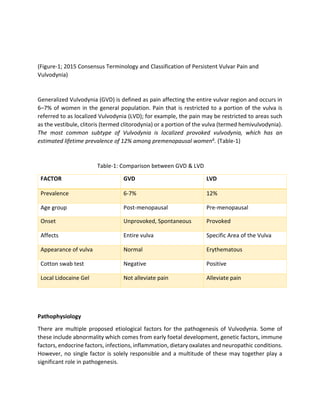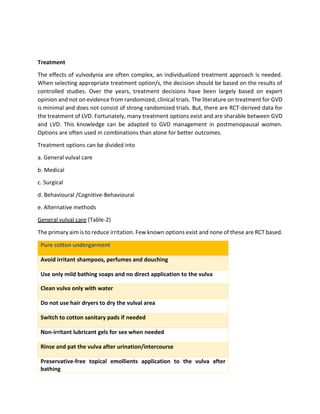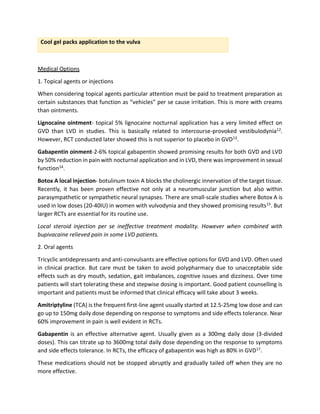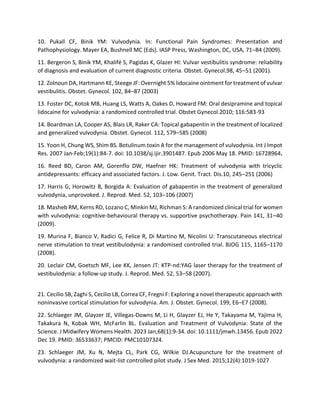Vulvodynia is a prevalent condition affecting up to 15.6% of postmenopausal women, characterized by persistent vulval pain that severely impacts quality of life, often with no identifiable cause. The diagnosis requires ruling out other conditions and typically involves a combination of symptom management strategies, including cognitive-behavioral therapy, topical treatments, and possibly medications. Despite advances in understanding and treatment, significant gaps remain in knowledge and research on vulvodynia, particularly within the Sri Lankan population.
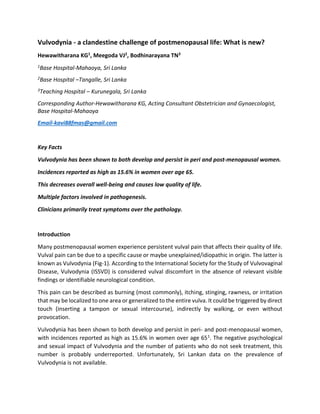
![Women with Vulvodynia report decreased overall well-being and low quality of life. Women are
often told that no physical cause can be found for their pain, implying that their pain results from
psychological problems or does not exist at all4,5. The lifetime prevalence of depression among
women with vulvodynia has been estimated to be 45% and, for two-thirds of patients, their first
depressive episode appears to have preceded the pain8.
Newer classification has eliminated former terms used to describe vulval pain such as vulvar
dysesthesia and vestibulitis. According to new terminology introduced in 2015, Vulvodynia is the
term used and further details of conditions in accordance to pre-set descriptors.
Caused by a specific disorder
Infectious (Eg, recurrent candidiasis, herpes)
Inflammatory (Eg, lichen sclerosis, lichen
planus, immunobullous disorders)
Neoplastic (Eg, Paget disease, squamous cell
carcinoma)
Neurologic (Eg, post herpetic neuralgia, nerve
compression or injury, neuroma)
Trauma (Eg, female genital cutting, obstetrical)
Iatrogenic (Eg, postoperative, chemotherapy,
radiation)
Hormonal deficiencies (Eg, genitourinary
syndrome of menopause [Vulvovaginal
atrophy], lactational amenorrhea)
Unexplained/Vulvodynia
Vulval pain of at least 3 months duration,
without a clear identifiable cause, which may
have potential associated factors.
The following are the descriptors:
Localized (Eg, vestibulodynia, clitorodynia) or
generalized or mixed (localized and
generalized)
Provoked (Eg, insertional, contact) or
spontaneous or mixed (provoked and
spontaneous)
Onset (primary or secondary)
Temporal pattern (intermittent, persistent,
constant, immediate, delayed)](https://image.slidesharecdn.com/vulvodyniaarticle-editedfinalversion-240512231202-b089e864/85/Vulvodynia-article-edited-final-version-docx-2-320.jpg)
